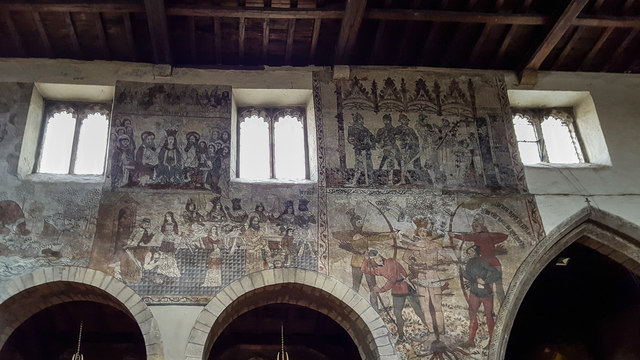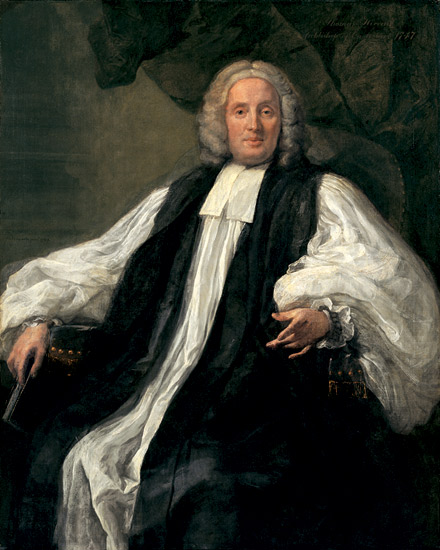However, I do now have a notion of how a clerical character class would occur within this setting.
First of all, this is grounded in fairly European eighteenth century ideals - even if not every player character, nation, or so forth shares in traits considered European. The eighteenth century in Europe was not, as such, a time of perfect religious tolerance (when has been?) but it is worth noting that the tenor of the age (if you will) is for a relative lack of strife. The Thirty Years War leaves a heavy shadow. The up-springing of new sects or movements (for instance, the Methodists and Pietists) is not met quite with the same social violence as the churning mess of non-conformsits around the English Civil War. Religious differences certainly exacerbate conflict, but are not as often the cause of it. Consider the Jacobite Rebellion of 1745. Even if Church and state work in tandem, there is a lessening of the connection between the two - witness the reforms of Joseph II (or indeed Peter the Great, to look Eastwards) and receding Papal influence. Towards the end of the century, witness the Deist influences on the Founding Fathers of the United States of America - and the separation of Church and State. Come to that, witness also the anti-clerical works of the French Revolution (this is putting it mildly).
Consider also Church interiors. There is a movement away from direct depiction of religious figures or events - even in Catholic buildings with the excesses of the Baroque and the Rococo. Compare the wall paintings of the Medieval period:
 |
| St Peter and St Paul's Church, Pickering |
and the white and gilt patterning of the Eighteenth Century.
 |
| St Mary Le Strand, London. If you zoom in on the altar, you will see three smaller paintings around the panels behind it. Two larger paintings are on the left and right, largely unseen from this angle. The ceiling of the dome above the altar is decorated with numerous winged heads, rays of light and floral arrangements. A triangle with the Hebrew name of God is at the centre. The presence of the Hanoverian coat of arms is not an irrelevant touch. |

...and here's a portrait of Thomas Herring, Archbishop of Canterbury 1747-1757:
 |
| By William Hogarth, May be found in the Tate Britain. |
 |
| And he may be found in the Fine Arts Museum of San Francisco. |
So, it is these kind of characteristics that an eighteenth century inspired faith would need to fit. As capable of producing hellfire preachers as subtle Jesuits; popular reformers or Princes of the Church. Capable of presenting a relatively abstract sort of theology. Possessed less and less of the power of the state, but capable of raising force and spirit when needed.
Anyway, this is what I've come up with.
***
In the city of Loribides, some four hundred years after it's foundation, during the fourth term of office of the Exarch Ctionas, there was a teacher, a debater, a scholar. He went by the name of Procophon and gathered a small but intense following. In time, he gained enemies - petty malice and envy from some, irritation from others. Their accusations led to his being declared an enemy of the state and he was forced to drink a slow but sure poison.
He died, or did something very like it.
However, after this he rose up again and a voice very like his own sprang from the cold lips; a voice like unto that of a son or daughter. His family certainly thought it him. Procophon then told of the world he had seen that lay the other side of death and thorough what eyes it is seen. Men propel themselves into the next world, moulding their souls over the course of life. The better the soul, the more Majestically it is transformed after or by death.
Some said Procophon had been favoured by the Gods and so had been granted this vision. Some said he was a fraud. Some said that the poison had been too slow, and had given him time to prepare himself perfectly for the next world. Accounts differ one what the man himself said.
Perhaps the poison was slow - some six months slow. The body fell and began to turn into corruption and the voice very like Procophon's was heard no more. The body was dismembered by his enemies and buried in secret. Procophon's daughter, Cnoh, was later killed by his grave. But their malice did not stop the teachings of the Majestic Vision had left from spreading.
Three of his pupils penned separate accounts of his life, before and after the deadly cup. These were collected into a book, the Words of Procophon. Later, dialogues and epistles of the faithful would be added to this. Five hundred and ten years after the foundation of Loribides, nationalist sentiments folded historical records of Loribides before and after Procophon into the Words, offering useful context of those times. A jumble of other proverbs, poems and writings were placed into the canon at this stage. It is this version of the Words that is the standard text employed by Diverse Realms and Kingdoms subscribing to the Majestic Vision.
Teachers spread the marvellous news and hope of the Majestic Vision. Some exhibited powers, derived from the potential energy of the Eidolon, or Soul-that-is-to-Come. By this they made their word known.
The tales of ghosts and the deeds of necromancers helped convince many. Ghosts have clearly not died peacefully, or with time to make proper use of the teachings of Procophon. Those things summoned by necromancers have no resemblance to Procophon as described in the Words.
Those subscribing to the Majestic Vision have a number of Schools that regulate the faithful. Perhaps the largest is based in Malicarn, but it's authority had been challenged upon multiple occasions by other, newer schools in different cities.
Charity is a virtue to those subscribing to the Majestic Vision, but, as it were, contingently. Folk with health and (moderate) wellbeing are better able to follow Procophon's example. Prayer, Sermons, Meditation, Scholarship, Discipline - these are the hallmarks of the Majestic Vision. Spiritual exercise for the refinement of the self. Many coming of age rituals are accompanied by tutelage, however perfunctory, in the principles of the Majestic Vision.
The hope of the Majestic Vision for the poor is to transcend what they have. The rich, having greater access to accounts of the supernatural or time to make a detailed study of the Words, generally have a more cerebral relationship with the Vision. Death may come at any time and one should not get the Eidolon get out of shape, but a wholehearted devotion can be delayed for the busy man. Of course, most folk subscribe to the Vision; conversions are not vital, rejuvenation might be.
Some have the mastery still to use the power of the Eidolon in this world. They are often feared and respected - or loved, depending on their uses of those powers.
A fairly obvious set of influences - though one quite a way under the surface is the heavily divided Egyptian soul. But I think that they fix the Eighteenth Century flavour well into the matter. There a relatively well recorded historical reality. There is a background set of ritual and worship, but upfront or vital. The Majestic Vision need not even be Theistic.
However, one thing this is not is Spiritualism, though the Majestic Vision acknowledges and considers ghosts and necromancy. But actively contacting the next world is impossible. No seances, no ectoplasm, no automatic writing and table knocking.
No comments:
Post a Comment